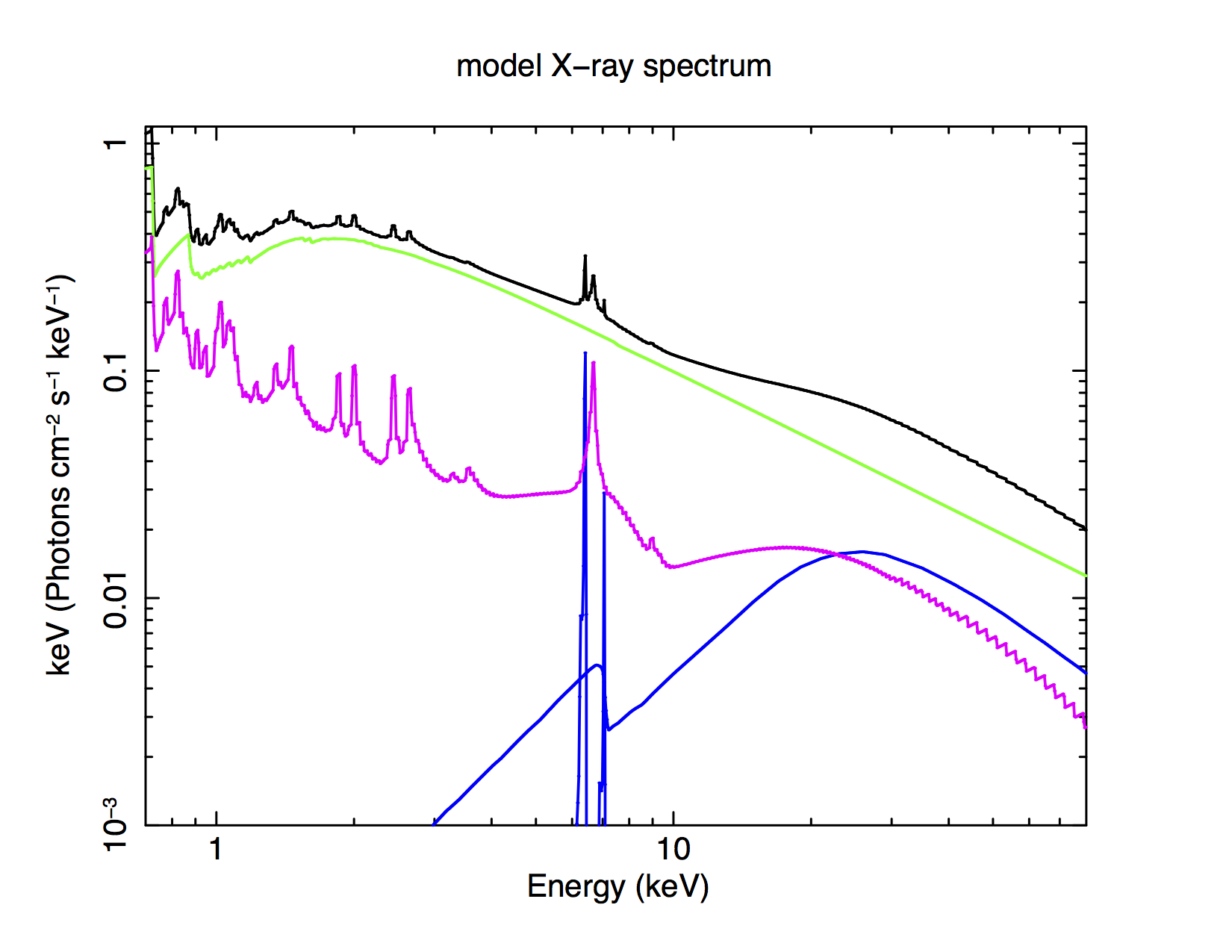Supermassive black holes grow by accreting matter that flows through an accretion disc, which in turn dissipates gravitational energy and radiates thermally. This mechanism is the primary source of emission from Active Galactic Nuclei (AGN). To first order, the spectrum emitted by AGN discs is well understood and simple predictions of its spectrum match observations. The accretion disc in AGN shines in the optical and UV regimes but shuts down before reaching X-ray energies. Given that AGN turned out to be strong X-ray emitters, a different emitting region, producing a non-thermal spectrum, has been proposed and named X-ray corona in analogy to the Solar case. The flux variability, which is a characteristic of AGN across the electromagnetic spectrum, is most rapid at X-rays, so the corona is not only its most energetic but also its most compact emitting region.
The corona changes its configuration as the accretion rate, or luminosity. One aim of this project is to study this dependence by accurately modelling the X-ray spectrum of AGN over a wide range of accretion rates. The shape of the spectra in turn will tell us, for example, if and when the X-ray emitter transitions from a corona to a jet. The main challenge is to separate the intrinsic emission from the reflected/scattered light off the accretion disc, torus and surrounding gas, and the energy-dependent effects of absorption, from both cold and ionised gas.
 In the Figure, the black line shows the observable spectrum, the green line is the intrinsic coronal emission, under a warm absorber, and the two additive components are the reflection off the accretion disc (ionised, magenta) and torus (neutral, blue) . Any curvature of the intrinsic spectrum at high energies is a key signs for jet or coronal models, but it is easily confused by the reflection components. Limited spectral ranges combined with low spectral resolution make this separation a highly degenerate problem.
In the Figure, the black line shows the observable spectrum, the green line is the intrinsic coronal emission, under a warm absorber, and the two additive components are the reflection off the accretion disc (ionised, magenta) and torus (neutral, blue) . Any curvature of the intrinsic spectrum at high energies is a key signs for jet or coronal models, but it is easily confused by the reflection components. Limited spectral ranges combined with low spectral resolution make this separation a highly degenerate problem.
We will combine observations from the most sensitive X-ray observatories in overlapping energy bands (XMM-Newton and NuSTAR) to model the 0.7-80.0 keV spectrum of 20 AGN. Our sample stems from the Palomar sample of AGN, selecting all the X-ray brightest AGN that appear unobscured in the optical band, with accretion rates ranging from 10^-8 to 0.1 L_Edd and black hole masses in the range from 10^6-10^9 Msun.
For this project we will combine archival and proprietary XMM-Newton and NusTAR data of this sample and model their spectra consistently.